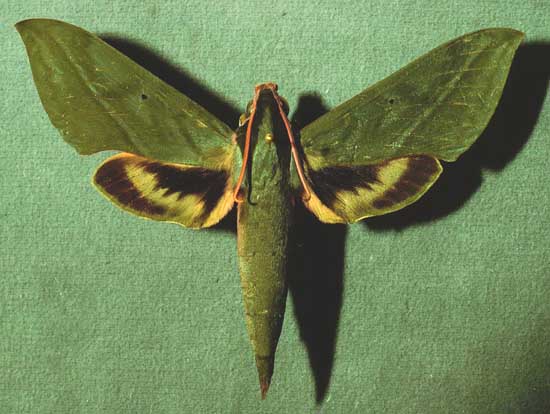
Xylophanes belti male courtesy of Dan Janzen.
This site has been created by Bill Oehlke.
Comments, suggestions and/or additional information are welcomed by Bill.
TAXONOMY:
Family: Sphingidae, Latreille, 1802 |
|
|
Updated as per Catalogo de las Especies de Sphingidae en Honduras, Ana Clariza Samayoa and Ronald D. Cave; December 2009 Updated as per personal communication with Albert Thurman (Chiriqui, Panama, 85mm., July 4-7, 2016); July 26, 2016 Updated as per personal communication with Gernot Kunz (El Copan, Cartago, Costa Rica, March 6, 2019, 1047m); April 16, 2019 |

This site has been created by Bill Oehlke.
Comments, suggestions and/or additional information are welcomed by Bill.
TAXONOMY:
Family: Sphingidae, Latreille, 1802 |
Albert Thurman confirms this species in Chiriqui, Panama.
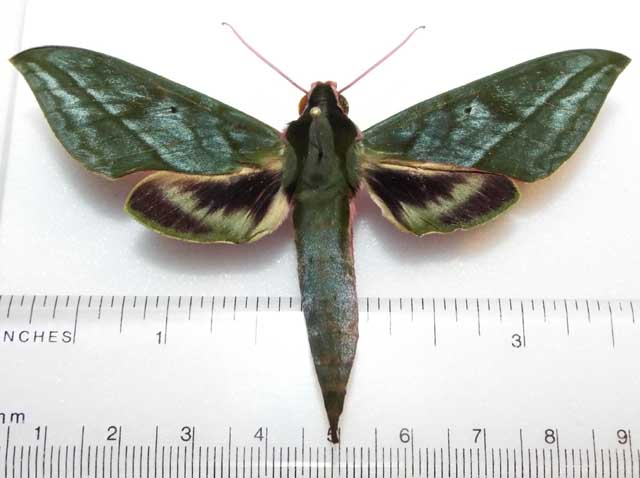
Xylophanes belti, Finca Hartmann, Santa Clara, Chiriqui, Panama,
85mm, July 4-7, 2016, 1505m, courtesy of Albert Thurman.
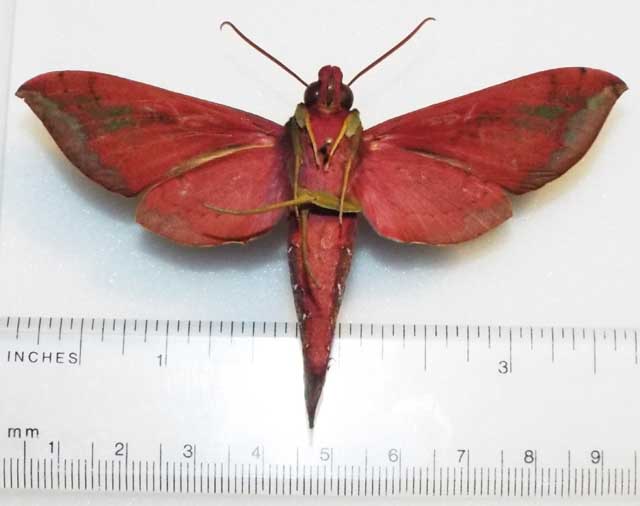
Xylophanes belti (verso), Finca Hartmann, Santa Clara, Chiriqui, Panama,
85mm, July 4-7, 2016, 1505m, courtesy of Albert Thurman.
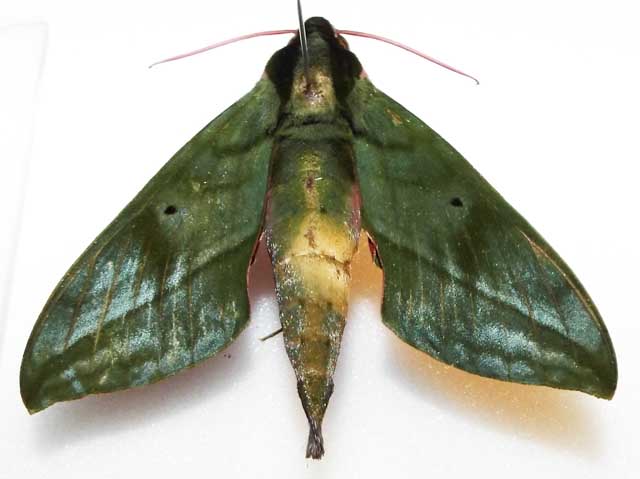
Xylophanes belti, Finca Hartmann, Santa Clara, Chiriqui, Panama,
85mm, July 4-7, 2016, 1505m, courtesy of Albert Thurman.

Xylophanes belti, El Copan, Cartago, Costa Rica,
March 6, 2019, 1047m, courtesy of Gernot Kunz.
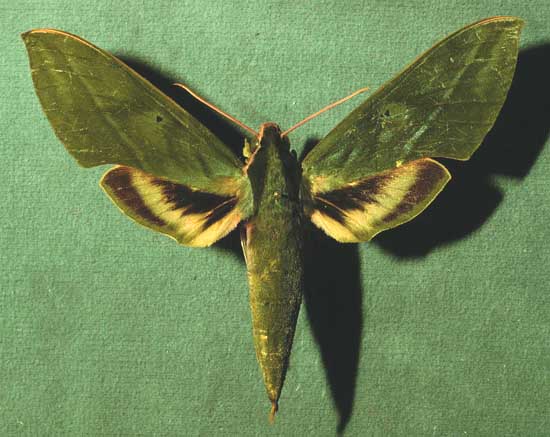
Moths emerge approximately one-two months after larvae pupate.
The pronunciation of scientific names is troublesome for many. The "suggestion" at the top of the page is
merely a suggestion. It is based on commonly accepted English pronunciation of Greek names and/or some
fairly well accepted "rules" for latinized scientific names.
The suggested pronunciations, on this page and on other pages, are primarily put forward to assist those who hear with internal ears as they read.
There are many collectors from different countries whose intonations and accents would be different.
"Xylo" is the Greek word for wood. The specimen type for the genus Xylophanes is Xylophanes anubus. Perhaps ? when Hubner
examined this species, the yellow-orange and brown tones of the forewings suggested wings of wood.
The species name "belti" possibly comes from Belti, a Babylonian goddess of the morning and evening star
‘star of Istar’. She descends, extinguishing all life, into the depths of the underworld, from which she is freed by Ea.
Jean-Michel Maes writes (April 30, 2007), "In the origin of the name, my guess is that it is in honor of Thomas Belt."
Thomas Belt was an English geologist and naturalist who died in 1978. I suspect Jean-Michel is correct.
Use your browser "Back" button to return to the previous page.
Goto Main Sphingidae Index
Goto Macroglossini Tribe
Goto Central American Indices
Goto Carribean Islands
Goto South American Indices
Goto U.S.A. tables
Use your browser "Back" button to return to the previous page.
This page is brought to you by Bill Oehlke and the WLSS. Pages are on space rented from Bizland. If you would like to become a "Patron of the Sphingidae Site", contact Bill.
Please send sightings/images to Bill. I will do my best to respond to requests for identification help.
Enjoy one of nature's wonderments: Live Saturniidae (Giant Silkmoth) cocoons.
 Show appreciation for this site by clicking on flashing butterfly to the left. The link will take you to a page with links to many insect sites. |